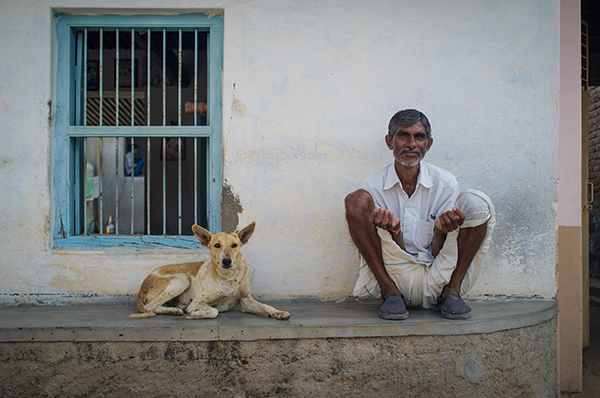Studies of dog genomes needn’t devolve into shaggy dog stories, not if scientists look at the right genomes. Specifically, scientists should consider the advantages of analyzing the genomes of village dogs instead of breed dogs. According to scientists based at the University of Michigan, a comparison of village dog and wolf genomes may emphasize the genetic changes associated with humans’ first efforts to domesticate dogs, while deemphasizing the genetic changes associated with later efforts at dog breeding.
Just this sort of comparison was carried out by a team of scientists led by Jeffrey Kidd, Ph.D., an assistant professor of human genetics. In Dr. Kidd’s lab, postdoctoral research fellow Amanda Pendleton, Ph.D., had been reviewing current domestication research when she noticed something peculiar about the DNA of modern dogs—at some places, it didn't appear to match DNA from ancient dogs.
“We convinced ourselves that previous studies found many genes not associated with being a dog but with being a breed dog,” said Pendleton. Breed dogs, which mostly arose around 300 years ago, are not fully reflective of the genetic diversity in dogs around the world, she explains. Three-quarters of the world's dogs are so-called village dogs, who roam, scavenge for food near human populations, and are able to mate freely. To get a fuller picture of the genetic changes at play in dog evolution, the team looked at 43 village dogs from places such as India, Portugal, and Vietnam.
Armed with DNA from village dogs, ancient dogs found at burial sites from around 5000 years ago, and wolves, they used statistical methods to tease out genetic changes that resulted from humans' first efforts at domestication from those associated with the development of specific breeds. This new genetic review revealed 246 candidate domestication sites, most of them identified for the first time by their lab.
Additional details appeared June 28 in the journal BMC Biology, in an article entitled “Comparison of Village Dog and Wolf Genomes Highlights the Role of the Neural Crest in Dog Domestication.” As the title of this article indicates, the comparison highlighted genes linked to neural crest and central nervous system development as well as neurological function.
“Our results identify genes that act early in embryogenesis and can confer phenotypes distinguishing domesticated dogs from wolves, such as tameness, smaller jaws, floppy ears, and diminished craniofacial development as the targets of selection during domestication,” the article’s authors wrote. “These differences reflect the phenotypes of the domestication syndrome, which can be explained by alterations in the migration or activity of neural crest cells during development.”
One gene in particular stuck out, called RAI1, which was the study's highest ranked gene. In a different lab within the department of human genetics, Michigan Medicine assistant professor of human genetics Shigeki Iwase, Ph.D., has been studying this gene's function and role in neurodevelopmental disorders. He notes that in humans, changes to the RAI1 gene result in one of two syndromes—Smith-Magenis syndrome if RAI1 is missing, or Potocki-Lupski syndrome if RAI1 is duplicated.
“RAI1 is a good entry point into studying brain function because its mutation results in a brain disorder,” he noted. “Studies suggest that this protein controls the expression of several genes involved in circadian rhythms. One of the unique features in these conditions is the problem these patients have with sleep.”
In dogs, changes to this gene may help explain why domesticated dogs are awake during the day rather than nocturnal like most wolves. Other genes Kidd's lab identified in dogs have overlap with human syndromes resulting from improper development of neural crest cells, including facial deformities and hypersociability. These parallels between dogs and humans are what make understanding dog genetics valuable.
Kidd explains, “We are using these changes that were selected for by humans for thousands of years as a way to understand the natural function and gene regulatory environment of the neural crest in all vertebrates.”



